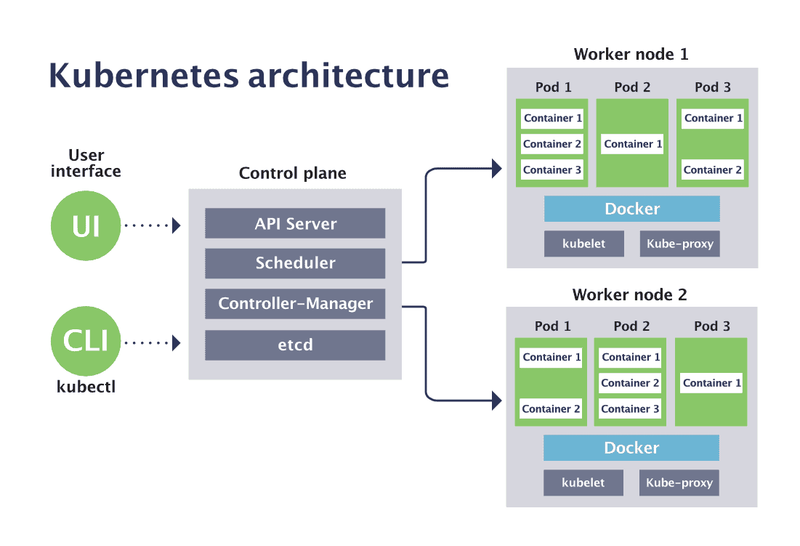What is Kubernetes?
Kubernetes is an open source platform that automates Linux container operations. It is and orchestration platform for scheduling and automating the deployment, management, and scaling of containerized applications.
Why Do we need Kubernetes? Explain in 10 lines.
Below are some reasons why we need Kubernetes :
- Kubernetes is Self-healing.
- Kubernetes is having storage orchestration.
- Kubernetes can handle multiple container which can be running in a single node or in multiple nodes.
- Kubernetes is having automated rollouts and rollbacks.
- Load balancing is taken care by Kubernetes.
- High availability is maintained by Kubernetes.
- Kubernetes is a open source and easily available.
- Managing the scaling of containers and clusters.
- Deploying images and containers.
- Kubernetes is able to store the configuration and security files as well.
How Kubernetes Works?
- Kubernetes works by Master and Worker.
- Master is the virtual machine which is present in one of the network and manages the workers.
- The workers are the nodes those contains one or more than one pods in it.
- Pods are the place where the one or more than one container is running. To access the containers running inside the pods we need to access the pod IP.
Kubernetes Architecture. Explain each component with one line.
1.Master
1.1 API Server : It is the Front-end to the control panel and exposes the APIs.
1.2 Scheduler : The scheduler is responsible for assigning work to the various nodes.
1.3 Cluster Storage : It is the persistent storage for cluster state and config.
1.4 Controller manager : The controller-manager is responsible for making sure that the shared state of the cluster is operating as expected.
2.Worker
2.1 Kubelet : It register nodes with cluster and instantiate a pod.
2.2 Container Engine : It is responsible for running of the container. Kubernetes supports multiple container engines and the default one is containerd.
2.3 Kube-Proxy : The Kube-proxy routes traffic coming into a node from the service. It forwards requests for work to the correct containers.



Top comments (0)